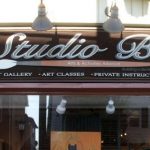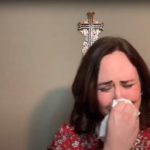IMAGE: Aspiring photographers take aim to capture the essence of their city.
Sometimes, beauty is not so obvious. Sometimes, it takes a new eye to see past old perceptions to find the splendor hidden just under a layer of what is commonplace.
People from all around Reading are seeing their surroundings in a new light, thanks to an initiative that is allowing aspiring photographers to capture moments of grace as they navigate their lives.
The OJOS photography project, formally named ‘OJOS: Eye of the Beholder,” is an initiative offered by Barrio Alegría. It aims to give participants within the City of Reading—and the South of Penn area, in particular—photography skills and a new perspective of the city they live in through the lens of a camera.
Held between June and September of each year, participants are able to learn from experienced photographers to learn the basics of what goes into shooting and editing photos.
Participants who are interested in the workshop can be brand new to photography, but that doesn’t always have to be the case.

OJOS originated through a connection when Daniel Egusquiza, executive Director of Barrio Alegría, came across a high school student’s photos on Facebook one day around six years ago.
Daniel reached out to her believing she was a photography student, but to his surprise it turned out she was a student at Reading High School.
He then asked her if she’d want to showcase her work at a gallery space he used to run at what was once the T.E.A Factory, a community art space located at Willow and South 6th Street.
“I asked, ‘what school are you in? Do you go to Kutztown University or Albright College? And she said no, I go to Reading High.’” Daniel said. “ I said ‘that’s incredible! Your work is pretty good!’”

From there, Daniel had the student ask other Reading High students if they also had photos to feature, and brought their photos together for Daniel to help look over and curate. When they were exhibited in the gallery space, they were shown to local neighbors and loved ones.
This sparked the idea for OJOS and for it to be bigger than this one show.
“That gave me the idea of making it bigger but also keeping it very close to that neighborhood, because the whole idea was that this student was taking pictures of her city, of her neighborhood taking close attention to details that, for some, would have been negative, like trash or a fire hydrant,” Daniel said. “The way in which she was photographing them gave them a different lens, a different type of identity. So trash is trash, and an abandoned building is an abandoned building, but art gives ways for people to say so much more and to uncover things.”
OJOS usually takes place between June and September of each year. In June, the participants take the two-hour workshop with an instructor and an almost unheard of opportunity is given to the participants afterwards: they are able to utilize digital cameras outside of Barrio’s walls for a week.
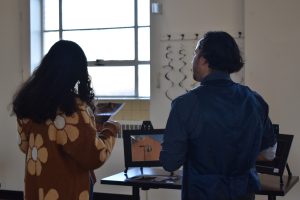
“We like to offer the opportunity for our young people inside of our community to be able to still come borrow cameras that they may not have access to otherwise and take them for a week or two to document their lives,” Daniel said. “We also keep those cameras here, but we don’t feel like they need to be static. They need to be constantly used so that, as they rotate and continue to document people’s lives, they are fulfilling their purpose in life which is to be out and to be used.”
There is a trust in this act of sharing equipment that someone might not have had access to otherwise, and many students have taken this trust to heart.
The story is that, out of all the cameras that we have loaned in our community, only one has been damaged due to a coffee spill; all the cameras come back,” Daniel said. “All the cameras are taken care of, and I feel that people really respect the trust that is put on them and they really identify with the ideal of what is mine is also yours, as long as you take care of it, and what good does a camera make in a bag somewhere collecting dust?”
After the participants take their photos, in July, Barrio goes over all the photos taken by the participants and works with them to choose their top five.
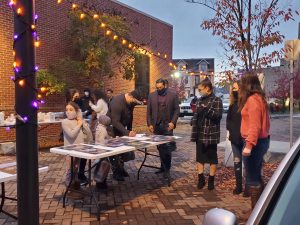
Later in the summer, a second OJOS workshop is held with the same format, with September being the designated month for participants to narrow down their photos to the top five. Finally, in October, the participants get the opportunity to showcase their top photos in a reception within the community.
Many of the participants of OJOS come from different walks of life and different experience levels. For city resident Ashley Dejesus, participating in OJOS was the first time she ever did photography, but she really enjoyed her experience.
“It was my first time holding a camera and being behind a professional camera like that. Usually, I just take pictures on my phone,” Ashley said. “It was a really fun experience, and it also allowed me to see my city from a different perspective, and I think that’s my favorite part about it, just seeing Reading differently.”
Robert Bara-Popa came into this workshop with prior experience as a professional photographer and videographer and went into the workshop to connect with others and have his work be seen by folks in the community.
He had previously participated in productions hosted by Barrio and was well-acquainted with everyone there . He not only made connections and had his work showcased, but he also ended up broadening his perspective of the city he lives in.
“It let me look in and really think ‘ok, what’s a really good way to represent this city?’” Robert said. “They say that a photo’s worth a thousand words, but it’s not all the time, like maybe a thousand words on a particular subject. You have to find something that really speaks in a broad enough sense that can speak to other people.”
Kris Batista, who works for Barrio Alegría, went into the OJOS classes with some prior experience in photography through skills she learned from Mateo Toro, a local photographer and videographer who owns and operates Retorocle Studios.
They raved about being able to take the digital camera home for a week and how the workshop further fostered a love for photography for them.
“At the end of the workshop after they explained how to use the camera and all that good stuff, we got to take the cameras home, and I love that,” Kris said. “I ended up keeping the camera for longer than I was supposed to, and they weren’t mad, but I took pictures of anything and everything and I never stopped, really. I don’t have the camera anymore, but I have my phone and a Flickr account.” Kris’ experience in OJOS emphasized how much they truly love to do photography and how much it fulfills them as an individual.
Participants were given the opportunity to showcase their favorite photos taken and edited during the classes at receptions located throughout the South of Penn area, including Southwest Middle School, Family Dollar located on South 6th Street, the Reading Public Library, and the local Salvation Army.
With each of their top photos, they were required to tell the story behind each of them, and with this story prepared ahead of time, they were able to easily share these stories with community members that attend the showcases and connect with them in that way, in addition to having the opportunity to sell prints of their work there.
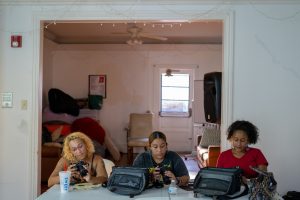
“It was even more fulfilling to see my work displayed in the city for other people to see and to buy my photography and support me as an artist, to have my friends from school come and see my photography.” Kris said. “It was so reassuring because I was an insecure teenager.”
Through photography and showcasing how participants see their city, perspectives and perceptions change on a city that has normally been seen under a negative light.
“So our hope is that whoever comes to take part in our programs does not leave being the same person,” Daniel said. “They leave thinking or having a different perspective about their community, a different perspective about their city, a different perspective about each other, and then those types of impacts are even more difficult to measure.”
“But from what I have seen people do or from what I have measured, people do feel like they have identified Reading as their home,” Daniel said. “They have identified more feelings of hope and a more positive outlook on life, so those things are obviously more difficult to measure, but just based on what people say, that leaves us with a lot of hope.”
This article is a part of “Historias del Barrio,” a series of stories written by local storytellers to highlight community members who have engaged with Barrio Alegría and the South of Penn Task Force, through a strategic partnership with The Wyomissing Foundation, to make positive impacts in their neighborhoods.


